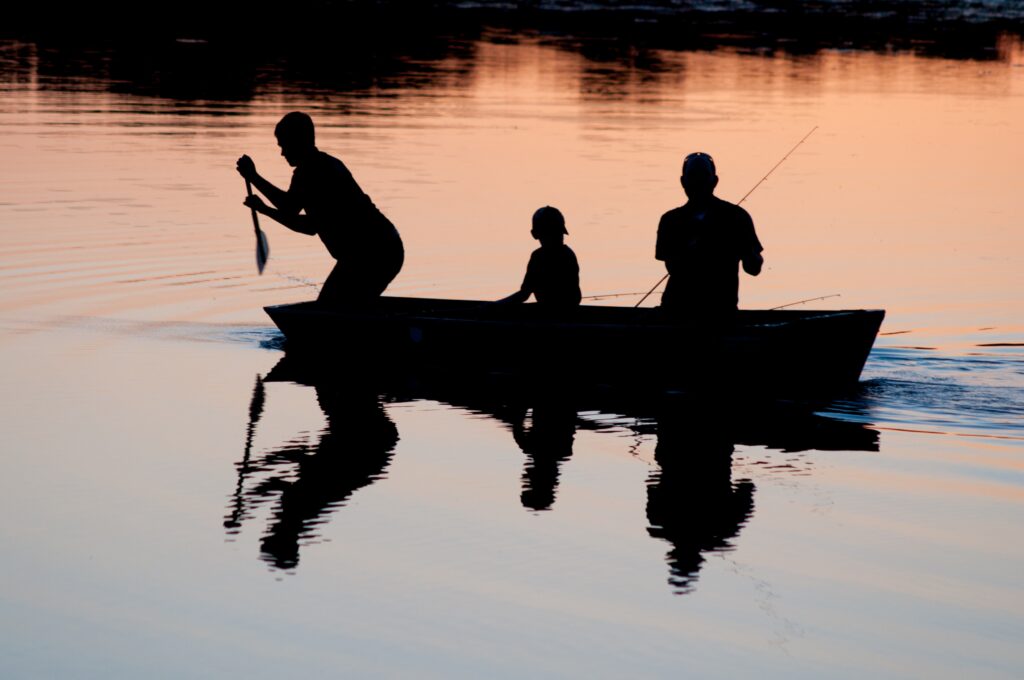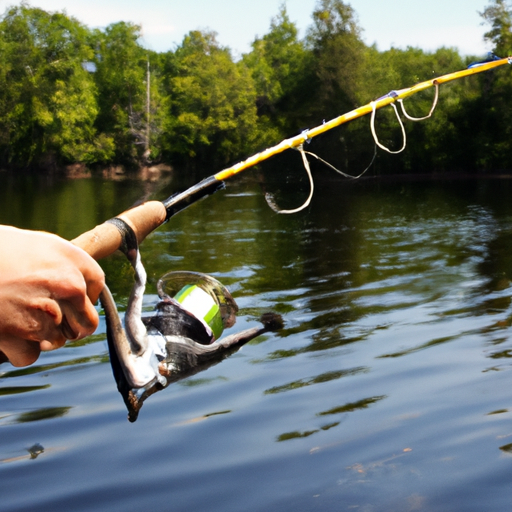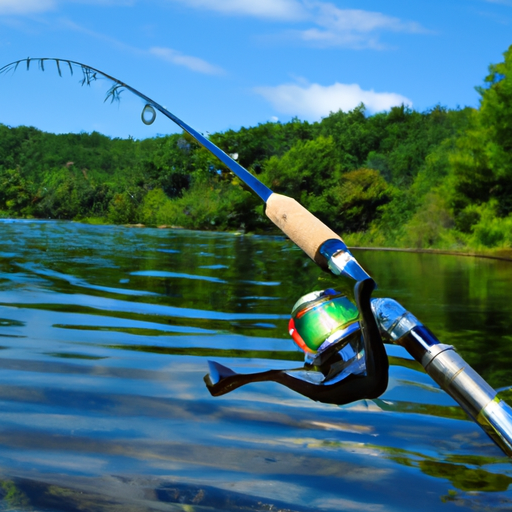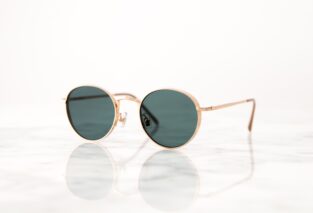If you’re an avid angler or just starting out, choosing the right fishing line strength can greatly impact your success on the water. With so many factors to consider, such as the type of fish you’re targeting and the water conditions, it can feel overwhelming. But fear not! Our comprehensive guide, “How To Choose The Right Fishing Line Strength: Factors and Tips for Line Visibility,” is here to help you navigate this crucial decision. From breaking down the different factors to providing expert tips on line visibility, this article will equip you with the knowledge and confidence to select the perfect fishing line strength for your next fishing adventure.

Factors to Consider
When it comes to choosing the right fishing line strength and ensuring good line visibility, there are several important factors to consider. These factors include the fishing environment, the target fish species, casting distance, line durability, and line diameter. By carefully considering these factors, you can select a fishing line that will perform well in your specific fishing conditions and help you catch more fish.
Fishing Environment
The fishing environment plays a crucial role in determining the type of fishing line you should choose. Two main categories of fishing environments are freshwater and saltwater.
Freshwater
Freshwater fishing can take place in lakes, rivers, ponds, and streams. The type of fishing line you choose for freshwater fishing will depend on factors such as water clarity and the size of the fish you are targeting.
Saltwater
Saltwater fishing presents its own unique challenges, including the corrosive nature of saltwater and the potentially larger size and strength of saltwater fish. When selecting a fishing line for saltwater fishing, it is important to choose a line that is specifically designed to withstand the harsh conditions of a saltwater environment.
Clear Water
In clear water conditions, fish have a clear line of sight and can easily detect fishing line. Therefore, it is important to choose a fishing line with high visibility or one that blends well with the surrounding water.
Murky Water
In murky water conditions, visibility is reduced, and fish rely more on other senses to detect prey. A high-visibility fishing line can still be advantageous in murky water as it allows you to track and control your line more effectively.

Target Fish Species
The size and strength of the fish species you are targeting will also influence your choice of fishing line. It is important to choose a line that is strong enough to handle the weight and power of the fish you are attempting to catch.
Small Fish
For small fish species, such as trout or panfish, a lighter fishing line with lower line strength may be sufficient. Lighter lines allow for more delicate presentations and increase the chance of a hookup.
Medium Fish
Medium-sized fish species, such as bass or walleye, require a fishing line that can withstand more resistance and force. Choosing a fishing line with medium strength and durability is essential when targeting these species.
Large Fish
Targeting larger fish species, such as muskies or marlins, requires a fishing line with high strength and durability. These fish possess significant strength and can put a heavy strain on your fishing line, so it is crucial to select a line that can handle the challenge.
Casting Distance
The distance you need to cast your fishing line will impact the type of line you should choose. Factors such as the type of fishing technique and the area you are fishing in will influence your casting distance.
Short Distance
When fishing in tight spaces or small bodies of water, a fishing line with shorter casting distance capabilities may be sufficient.
Medium Distance
Medium casting distances are commonly encountered in a variety of fishing situations. A fishing line with medium casting capabilities will allow you to reach a wider range of fishing spots effectively.
Long Distance
For long distance casting, such as surf or deep-sea fishing, a fishing line with excellent casting distance is essential. The line must be strong enough to withstand the force of a long cast and allow for accurate and precise placement of the bait.

Line Durability
Line durability is an important consideration when choosing a fishing line. Factors such as abrasion resistance, strength, and shock resistance all determine the overall durability of the line.
Abrasion Resistance
Fishing lines with high abrasion resistance are more resistant to wear and tear, making them suitable for fishing in areas with rocks, coral, or other abrasive surfaces.
Strength
The strength of a fishing line refers to its ability to withstand pulling forces without breaking. Choosing a fishing line with the appropriate strength for the fish species you are targeting is crucial for successful fishing.
Shock Resistance
Shock resistance is the line’s ability to absorb sudden jolts or impacts. This is especially important when targeting larger fish species that can make powerful runs or sudden changes in direction.
Line Diameter
The diameter of your fishing line also plays a crucial role in its performance. Different line diameters have various advantages and disadvantages, and the right choice will depend on the fishing conditions and target fish species.
Thin Diameter
Fishing lines with a thin diameter offer several benefits. They are less visible to fish, allowing for a more natural presentation. Thin lines also have less resistance in the water, enabling longer and more accurate casts.
Medium Diameter
Medium diameter fishing lines strike a balance between visibility and strength. They are suitable for a wide range of fishing conditions and fish species, providing good overall performance.
Thick Diameter
Thick diameter fishing lines offer increased strength, making them ideal for targeting larger fish species. However, their increased visibility in the water may require more strategic presentation techniques.

Tips for Line Visibility
Ensuring good line visibility is important for tracking your line and detecting subtle strikes. Here are some tips to enhance line visibility:
Consider Water Clarity
Take into account the clarity of the water you will be fishing in. Clear water may require a fishing line with higher visibility, while murky water may be more forgiving in terms of line visibility.
Match Line Color to Surroundings
Matching the color of your fishing line to the surrounding environment can help camouflage it and make it less visible to fish. For example, using green line in vegetated areas, clear or blue line in open water, and brown or gray line for bottom fishing can enhance line invisibility.
Use Fluorescent or High-Visibility Lines
Fluorescent or high-visibility lines are designed to stand out in the water and make it easier for anglers to track their line. These lines can be particularly useful in low-light conditions or when fishing in areas with dense cover.
Avoid Highly Reflective Lines
Lines with a high degree of reflectivity can potentially alert fish to your presence. It is best to choose a fishing line with minimal reflective properties to avoid spooking fish.
Test Line Visibility in the Field
Before heading out for a day of fishing, it is beneficial to test the visibility of your chosen fishing line in the actual fishing environment. This will give you a better understanding of how visible your line is to fish in different light conditions and water depths.
Consider Water Clarity
Water clarity is an important factor to consider when selecting a fishing line. Here are some considerations for both clear water and murky water conditions.
Clear Water
In clear water, fish have a clear line of sight and can easily detect fishing lines. To minimize the visibility of your line, choose a line with high visibility or one that blends well with the surrounding water. This will help increase your chances of fooling wary fish into biting.
Murky Water
In murky water, visibility is reduced due to suspended particles and algae, making it more difficult for fish to detect fishing lines. However, using a high-visibility line can still be advantageous in these conditions, as it allows you to track and control your line more effectively.

Match Line Color to Surroundings
Matching the color of your fishing line to the surroundings can greatly enhance line invisibility. Here are some recommendations for different fishing environments:
Green Line for Vegetated Areas
When fishing in areas with heavy vegetation or algae, using a green fishing line can help camouflage the line and make it less visible to fish. This allows for a more natural presentation and increases the chances of a successful hookup.
Clear or Blue Line for Open Water
In open water environments, clear or blue fishing lines are often the best choice. These colors closely resemble the color of the water and can help minimize the visibility of the line to fish.
Brown or Gray Line for Bottom Fishing
When bottom fishing, choosing a fishing line in brown or gray colors can help blend the line with the bottom substrate. This reduces the chances of spooking fish that are near the bottom.
Test Line Visibility in the Field
Testing the visibility of your chosen fishing line in the actual fishing environment can provide valuable insights into how visible the line is to fish. Here are some aspects to consider during field testing:
Testing Different Line Colors
Experiment with different line colors in different fishing conditions to determine which color provides the best line visibility. Changing lighting conditions and water depths may also affect how visible the line is, so be sure to test in various situations.
Assessing Line Visibility at Different Depths
Fishing at different depths can impact line visibility. Take note of how visible your fishing line is at different depths and adjust your line choice accordingly.
Evaluating Line Visibility in Changing Light Conditions
Lighting conditions can change throughout the day, affecting line visibility. Observe how your fishing line appears under different light conditions, such as early morning, midday sun, and dusk. This will help you choose a line that maintains good visibility regardless of the lighting conditions.
By carefully considering the fishing environment, target fish species, casting distance, line durability, and line diameter, you can choose the right fishing line strength and enhance line visibility. These factors, along with tips for line visibility, will help you select the best fishing line for your needs and increase your chances of a successful fishing trip. Happy fishing!





